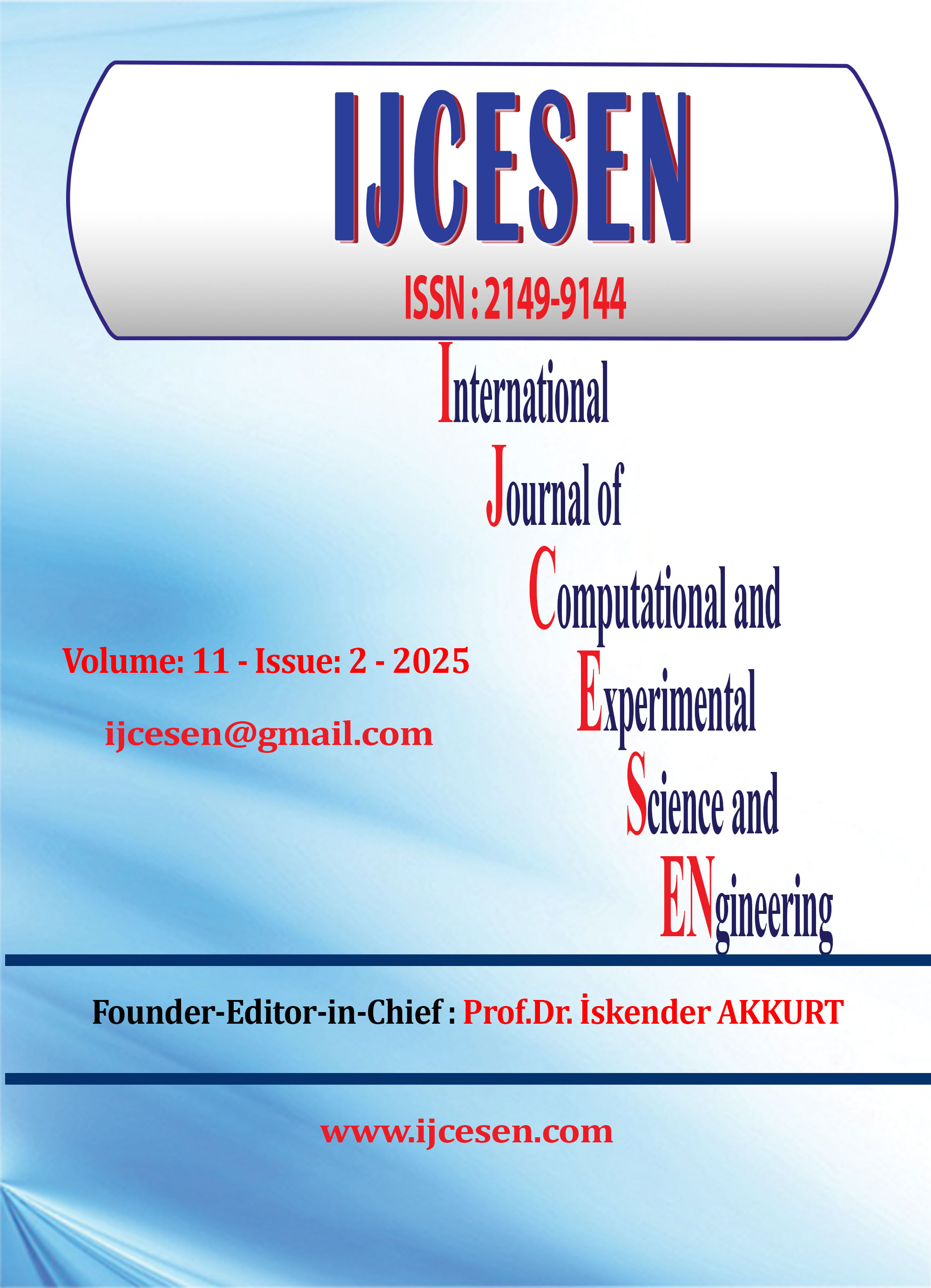Real-Time Clustering of Seagrass Age Categories Using Deep Learning and Unsupervised Machine Learning
DOI:
https://doi.org/10.22399/ijcesen.2219Keywords:
seagrass, Convolutional Neural Network, VGG-16, K-means clustering, real-time classification, ecological monitoring, machine learning, marine biodiversity, environmental managementAbstract
Seagrass ecosystems play a vital role in maintaining marine biodiversity and ecological balance, making their monitoring and management essential. This study proposes a novel approach for real-time clustering of seagrass images into three distinct age categories—young, medium, and old—using deep learning and unsupervised machine learning techniques. We employ the VGG-16 convolutional neural network (CNN) for feature extraction from a dataset of 800 seagrass images, followed by K-means clustering to categorize them. Our methodology includes image preprocessing, VGG-16 model optimization for real-time processing, and feature extraction followed by K-means clustering. We evaluate the clustering results using metrics like silhouette score and Davies-Bouldin index, along with performance visualizations through ROC curves and confusion matrices. The findings demonstrate the effectiveness of our approach in capturing age-related patterns, providing a valuable tool for marine ecosystem management. The model achieved a silhouette score of 71% and a Davies-Bouldin index of 42%, indicating strong intra-cluster similarity and well-separated clusters. These results outperform traditional image-based classification methods, validating the robustness of our real-time clustering approach.
References
[1] J. W. Fourqurean et al. (2012). Seagrass ecosystems as a globally significant carbon stock. Nature Geoscience, 5(7); 505–509.
[2] Y. LeCun, Y. Bengio, and G. Hinton. (2015). Deep learning. Nature, 521(7553); 436–444.
[3] A. A. Yilmaz, M. S. Guzel, E. Bostanci, and I. Askerzade. (2020). A novel action recognition framework based on deep-learning and genetic algorithms. IEEE Access, 8; 100631–100644. DOI: 10.1109/ACCESS.2020.2997962
[4] Ö. Aslan and A. A. Yilmaz. (2021). A new malware classification framework based on deep learning algorithms. IEEE Access, 8; 87936–87951. DOI: 10.1109/ACCESS.2021.3089586
[5] A. A. Yilmaz. (2022). A novel hyperparameter optimization aided hand gesture recognition framework based on deep learning algorithms. Traitement Du Signal, 39(3); 823–833. DOI: 10.18280/ts.390307.
[6] A. A. Yılmaz, M. S. Guzel, İ. Askerzade, and E. Bostanci. (2020). A novel action recognition framework based on deep-learning and genetic algorithms. IEEE Access, 8; 100631–100644. DOI: 10.1109/ACCESS.2020.2997962.
[7] A. A. Yılmaz. (2025). A novel deep learning-based framework with particle swarm optimisation for intrusion detection in computer networks. PLOS One, 20(2); 1–23. DOI: 10.1371/journal.pone.0316253
[8] A. A. Yılmaz. (2022). Intrusion detection in computer networks using optimized machine learning algorithms. In Proc. 2022 3rd International Informatics and Software Engineering Conference (UBMYK), pp. 1–5. IEEE.
[9] M. Reyes, S. Jones, and R. Palmer. (2020). Automated terrestrial ecosystem monitoring using CNNs. Environmental Monitoring and Assessment, 192(3); 1–12.
[10] R. Huang et al. (2020). CNN-based coral health assessment from underwater imagery. Marine Biology Journal, 87(2); 245–259.
[11] O. Beijbom et al. (2012). Automated annotation of coral reef survey images. In Proc. IEEE Conf. on Computer Vision and Pattern Recognition, pp. 1170–1177.
[12] A. Williams et al. (2019). Deep learning for coral reef assessment. Coral Reefs, 38(2); 303–315.
[13] Y. Gao and X. Liu. (2021). Detection of invasive species using remote sensing and deep learning. Journal of Ecological Applications, 31(1); e02192.
[14] M. Kampouraki et al. (2019). Remote sensing for seagrass monitoring: Advances and limitations. Journal of Marine Science, 73(5); 1263–1275.
[15] K. Petrou et al. (2020). Detection of seagrass distribution changes. Remote Sensing of Environment, 239; 111603.
[16] R. J. Orth et al. (2006). A global crisis for seagrass ecosystems. BioScience, 56(12); 987–996.
[17] A. Gitelson et al. (2017). Remote sensing techniques in vegetation classification. Journal of Remote Sensing, 10(3); 405–415.
[18] P. Alonso et al. (2021). Unsupervised clustering techniques for phytoplankton categorization in oceanographic studies. Journal of Marine Science, 112(4); 367–378.
[19] Z. Li et al. (2020). Deep learning in environmental monitoring. Environmental Modelling & Software, 135; 104918.
[20] O. Sevinc, M. Mehrubeoglu, K. Cammarata, C. Huang, and L. McLauchlan. (2024). Age-based clustering of seagrass blades using AI models. In Proc. SPIE 13034, Real-Time Image Processing and Deep Learning 2024, 130340F. DOI: 10.1117/12.3014915.
[21] The Seagrass Dataset and Codes. (2025). https://github.com/so mer81/Colab_SeaGrass (Accessed Jan. 1, 2025)
[22] K. Simonyan and A. Zisserman. (2014). Very deep convolutional networks for large-scale image recognition. arXiv preprint arXiv:1409.1556.
Downloads
Published
How to Cite
Issue
Section
License
Copyright (c) 2025 International Journal of Computational and Experimental Science and Engineering

This work is licensed under a Creative Commons Attribution 4.0 International License.





